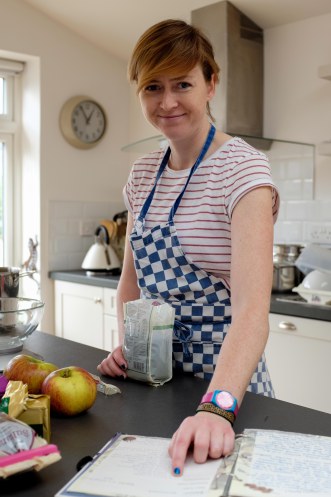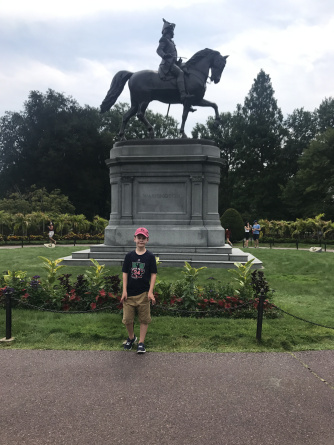After a study of some August Sander portraits, this exercise requires the student to make a portrait of someone they know, paying close attention to to what is happening in the background of the shot, how the subject is posed and what is included in the photograph. Ideally, the background should tell the viewer something about the subject.
Reviewing any book on the history of photography, would reveal references to August Sander’s People of the Twentieth Century. Sander seems to have been ahead of his time, being one of the pioneering photographers to move portraiture beyond the studio, to make “simple, natural portraits that show the subjects in an environment corresponding to their own individuality” (Ang 2014 p.152).
August Sander’s People of the Twentieth Century, which feature people defined by their profession, “remains one of the most sustained attempts to define individuals within their time and culture” (Clarke 1997). Sander did not discriminate. He photographed the full range of people across all walks of life, young, old, rich and poor. He had a “severe portrait style” (Jeffrey 2010 p.132), with many of his photographs appearing static and quite formal, taken at full or half-length. The majority of Sander’s portraits seem to feature subject that are looking at the camera, and engaging directly with the viewer. Sander’s image, The Bricklayer, is a good example of this engagement with the viewer. The bricklayer squarely faces the camera and the portrait seems formally posed, his broad shoulders fill the camera frame, denoting his strength and the physicality of his work. He is loaded down with props, that inform the viewer of his occupation, and so the simple title describing his trade seems unnecessary, although it does add greatly to Sander’s overall typology. The dark background doesn’t add any information about the subject, although it does allows the subject to stand out and impose himself on the viewer.
In contrast to The Bricklayer, in Sander’s, The Banker, the subject’s gaze is not on the viewer, but just beyond them, as if in thought. The desk creates a physical barrier along with a plethora of official banking paraphernalia (stamps and ink pads), which put him out of the reach of the ordinary man. His comfortable position affords him the time to enjoy a cigar while reviewing some bank documents. His clothes are expensive and his clean shave and neat appearrance is in keeping with his affluent position and social standing. The background reveals a door some distance away indicating a substantial office space. The main difference I see between these two photograph is where the subject is looking. The bricklayer look directly at us (and Sander), we are not above or below him in social standing. The banker does not engage with us, not everyone can an audience with him. The banker is not our equal, we have been lucky for the brief momentary glimpse into his world.
Sander’s image of The young farmers reveals a far more dynamic and possibly spontaneous photograph. The farmers are thought to be one their way to a dance in a neighbouring village and “seem to have paused, but only momentarily, to present themselves to the camera” (Jeffrey 2010 p.132). They gaze at Sander and the viewer with indifference, possibly even a hint of curiosity. Although the farmers are looking at the camera, their bodies are turned to the side creating tension. They are very much committed to their direction of travel.
My girlfriend, Gráinne, agreed to be my subject for this exercise and appears in the image below.

Gráinne is posed at an oblique angle, which is neither confrontational nor passive. The viewer is greeted by the subject’s smile and relaxed posture, an indication of the subjects comfort with the camera and surroundings. I used a wide aperture to created a shallow depth of field as there was no reason for anything other than the subject to be sharp. Even blurred the background and other props clearly denote a kitchen setting. The clock places the photographs capture at almost 13.00 hours, which isn’t particularly significant. The kettle, extractor fan and ornamental geko in the background indicate the probability that this is a domestic kitchen rather than a professional one. The props around the subject denote ‘Baking’, while her finger points to or is following instruction in a folder, notebook or recipe book.
While my portrait doesn’t reveal Gráinne’s true occupation, although it could potentially mislead, it does demonstrate her interest in baking. Hr nail polish work against the idea of her being a professional chef/baker. She is obviously happy as she goes about her task. The number of apples is an indication of the scale to which she is baking, while the appearance of the product packaging confirms that there is definitely no possibility of this being a photo shoot for professional purposes. The overall tone of the image is warm and engaging.
Where I feel that the image perhaps falls down a little is in the placement of the subjects hand. It’s a little too prominent as I feel that it acts like an arrow drawing the viewer’s eyes down to the bottom of the photograph. If her hand had been closer to her body and more subtly placed, the result would be a much stronger image. That aside, overall I’m happy with the my portrait and I’ve learned more from the exercise as is than if I had captured a more complete portrait.
Reference
Ang, T. (2014) Photography The Definitive Visual History, London: Dorling Kindersley.
Badger, G. (2007) The Genius of Photography: How photography has changed our lives, London: Quadrille.
Clarke, G. (1997) The Photograph, Oxford: Oxford University Press.
Jeffrey, I. (2010) Photography A Concise History, London: Thames & Hudson Ltd.
MoMA (2017) August Sander [online], available: https://www.moma.org/artists/5145 [accessed 6 Nov 2017].
Tate (2016) Tate [online], available: http://www.tate.org.uk/art/search?q=August%20sander [accessed 6 Nov 2017].
Warner Marien, M. (2010) Photography: A Cultural History, 3rd ed., London: Laurence King.
Advertisements Share this:





